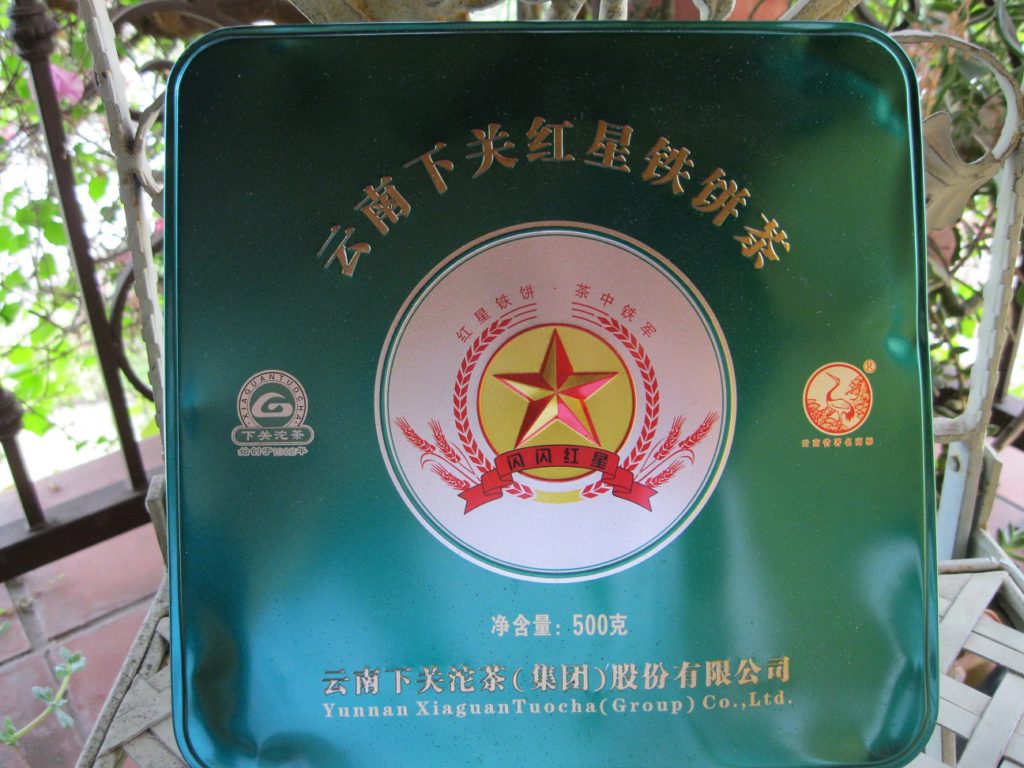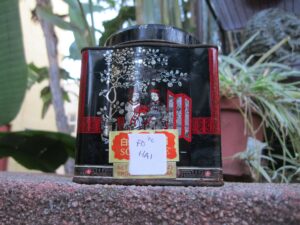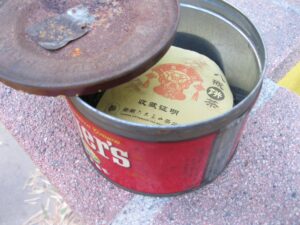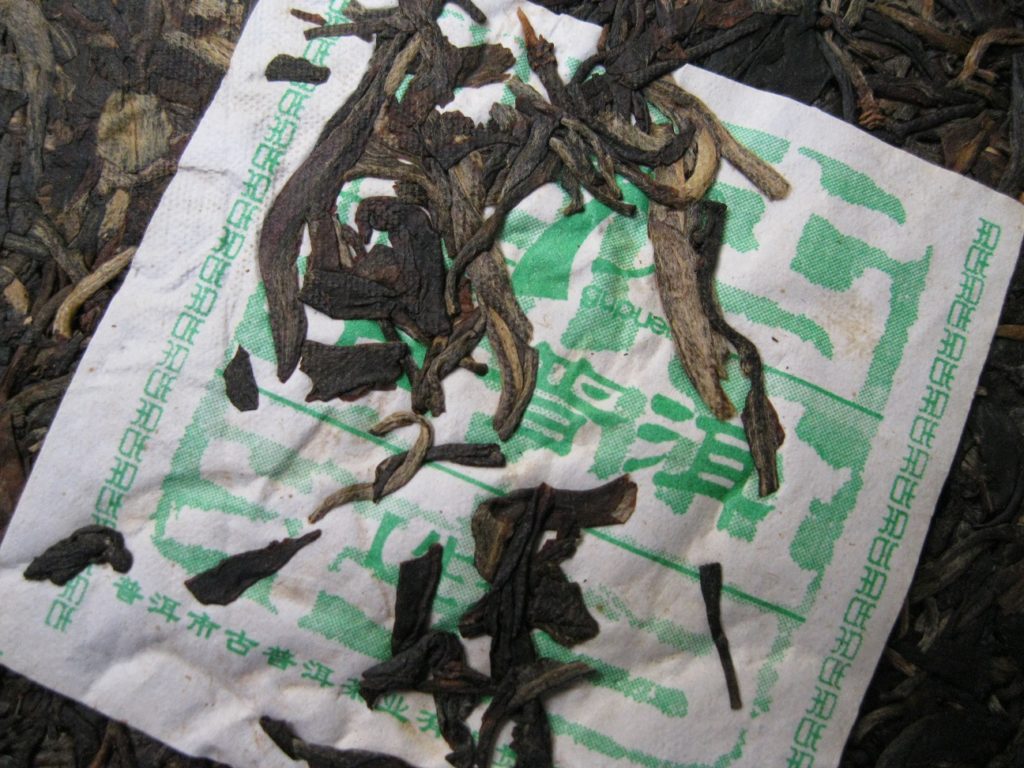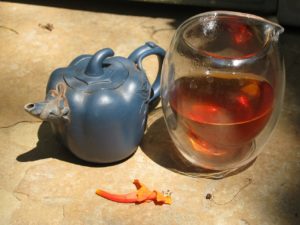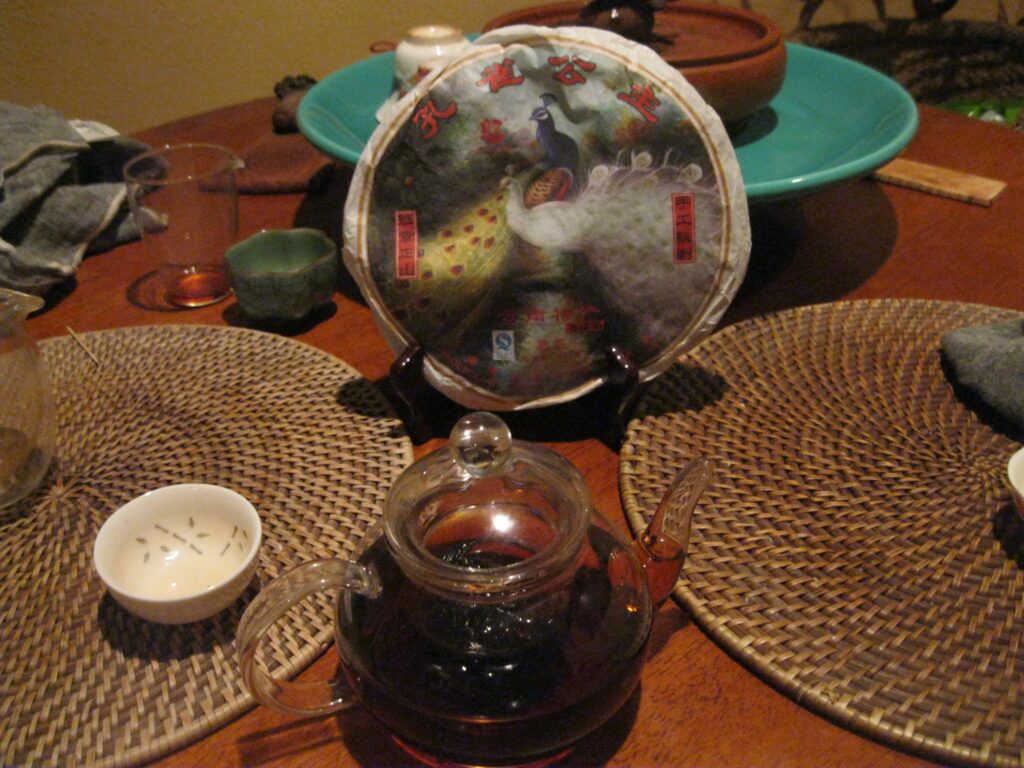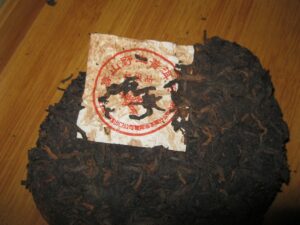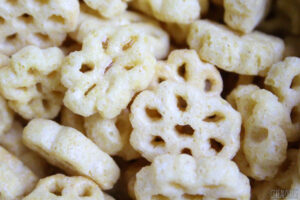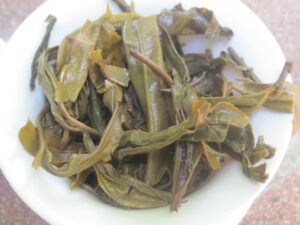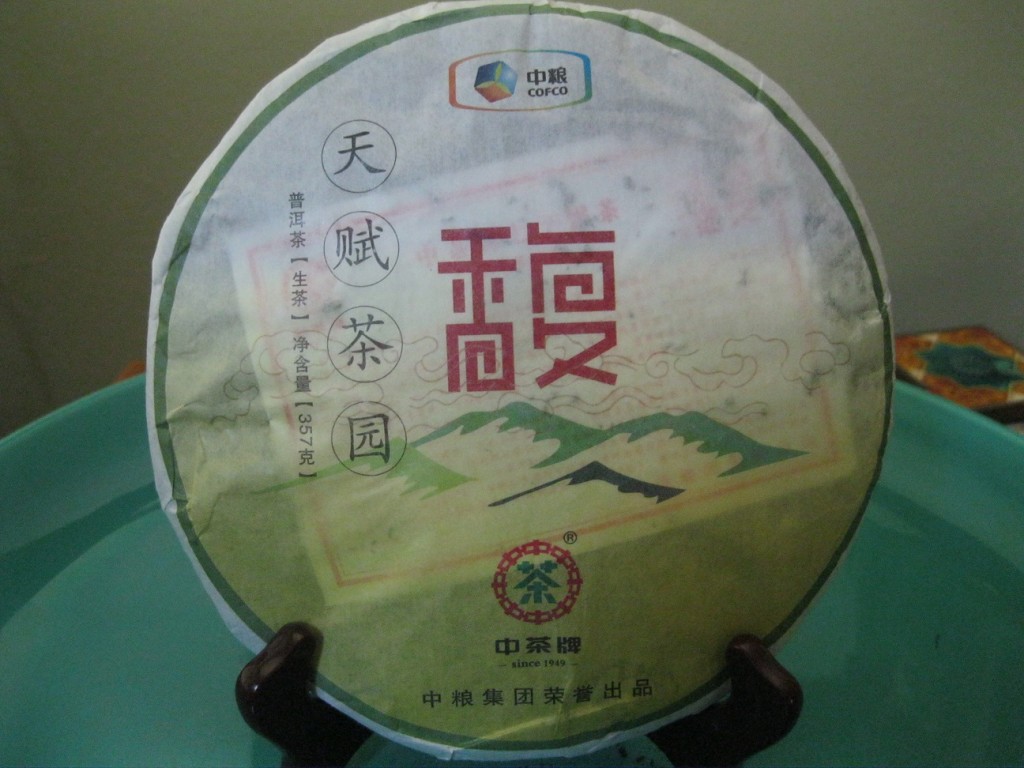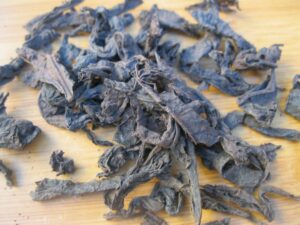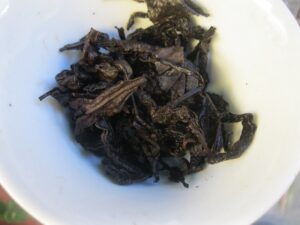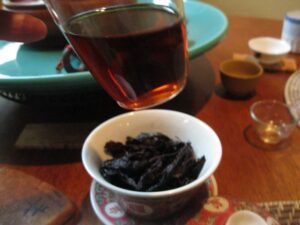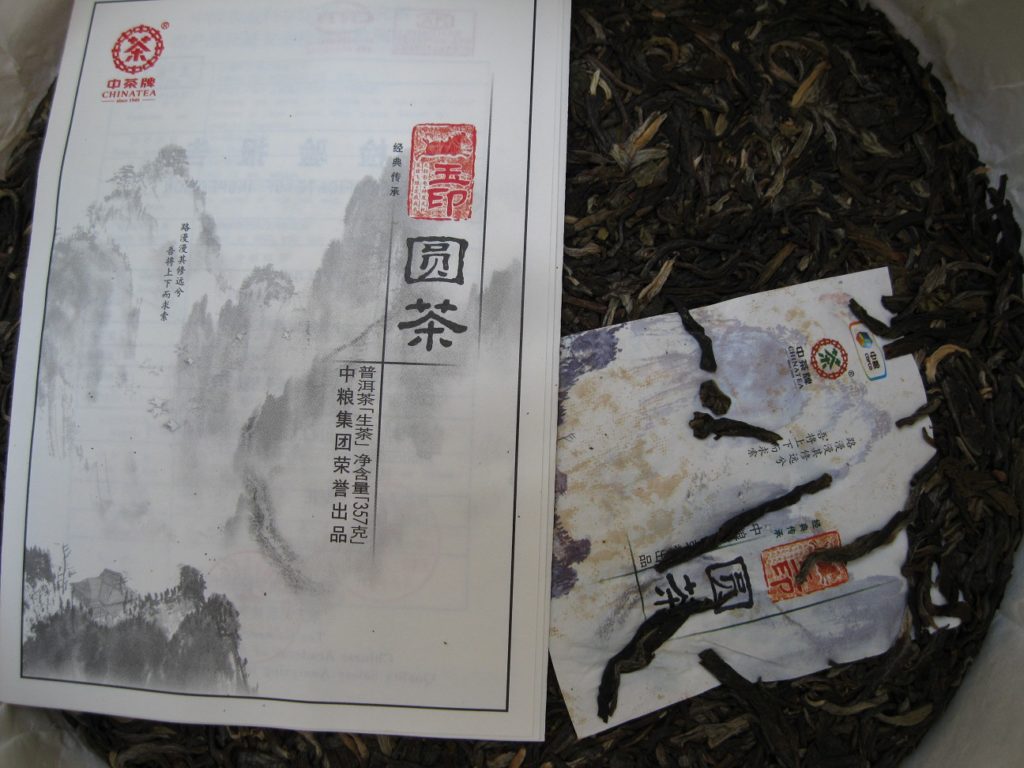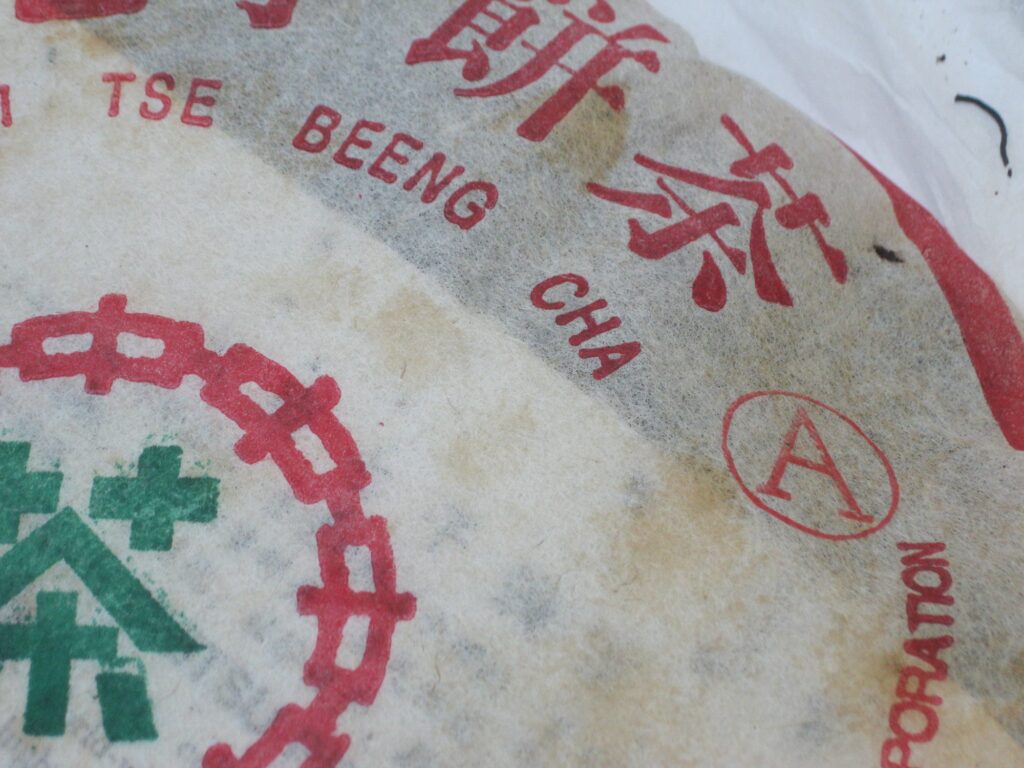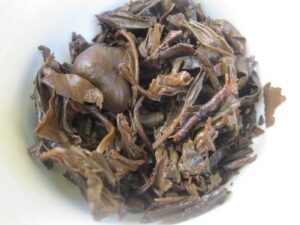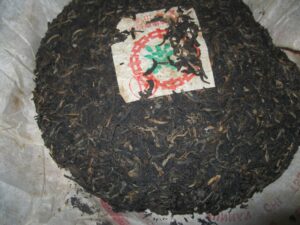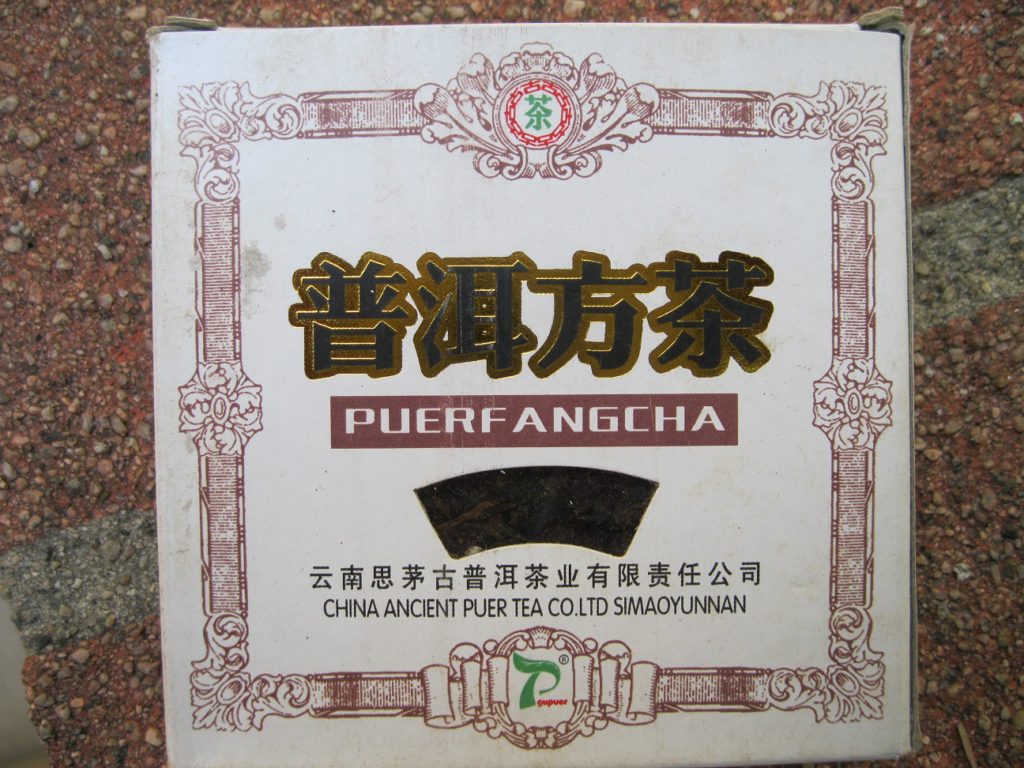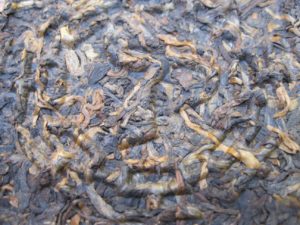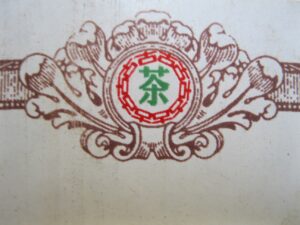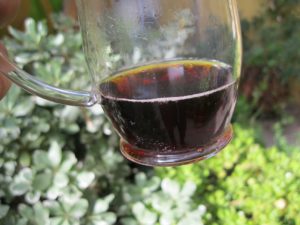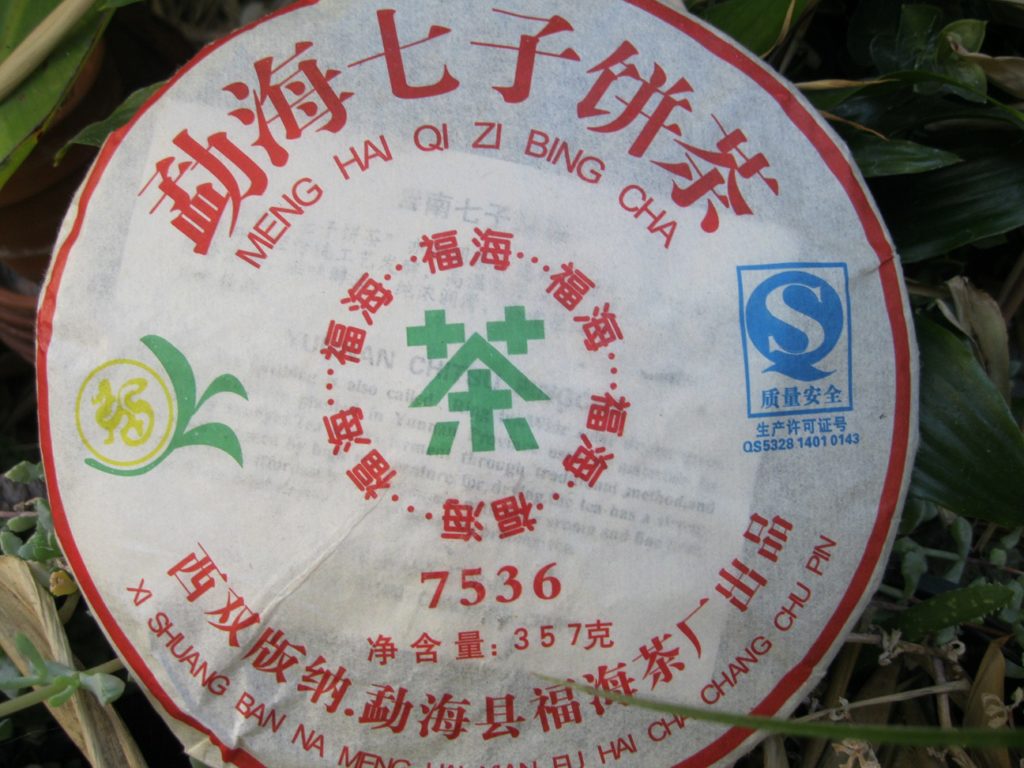Puerh Tin Report
The Puerh Tin Report takes the reader deep into the doings the Puerh Junky. This time it involves testing the effects of tinning of two productions after only two weeks. Well, more precisely one after a week and the other after two. They are both 6FTM productions: week one ’06 Fohai and week two ’07 Pig. Sooner or later the the Fohai will be offered, whereas the Pig is part of the Lunar Series.
Recently yours truly raved about the findings from tinning the raw puerh cake Fu for three years. Would it be necessary to tin for such a long time to obtain the same results? The Fohai and the Pig struck me as good candidates for different reasons. The former didn’t possess the same zing as when originally purchased, and the latter has always struck the Puerh Junky as too zingy.
I tried the Fohai after a week. The tin above is one that I found on a dock in the marina after returning from a three-day sailing trip about eight years ago. I figured it must have been a gift from the gods and it contained chun-mee that I’ve possibly had three times. The tin has double-lid action. Something might have to be done about that.
The first thing this Puerh Tin Reporter noted was a storagey aroma that also affected the taste of the first two infusions. This will have to be watched. Nonetheless, the liveliness initially found had returned much to my delight. Preliminary findings are cautiously optimistic and remarkable after only one week.
Week two featured the Pig from a Folger’s tin from the 60s. I got this from my since-passed 90 something neighbor, who was storing some black tea in it also from the 60s. You can tell this tin is old and actual tin because of the visible seam. Would it impart a metallic taste? Kazaaa!
For the first time the Pig was spectacular. I used a conservative 4.5g in my slow pour, florally designated zisha. The piercing edginess was not only no longer there but the same lively tangerinesque attributes also present in the Fohai.
Puerh Tinned Report tentatively reports overall very positive findings from the tinning of two raw puerh cakes from 6FTM. These are two floral offerings, but it is doubtful that tinning in anyway is better for one type of expression over another, say tobacco vs Zen vs floral. We’ll have to wait and see.
Yeah, I still have that black tea from the 60s, in case you were wondering.

